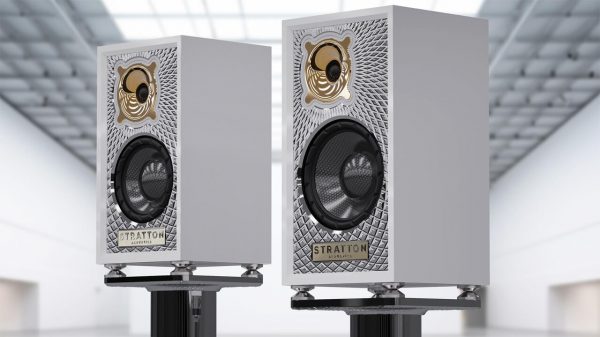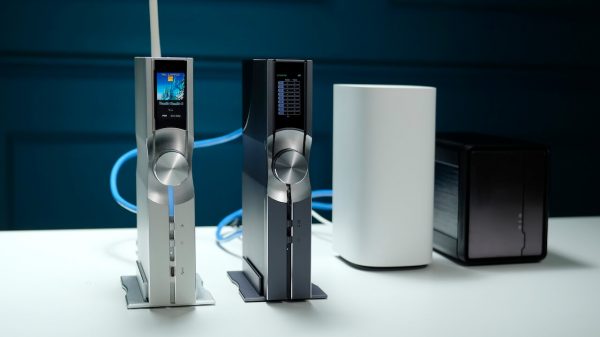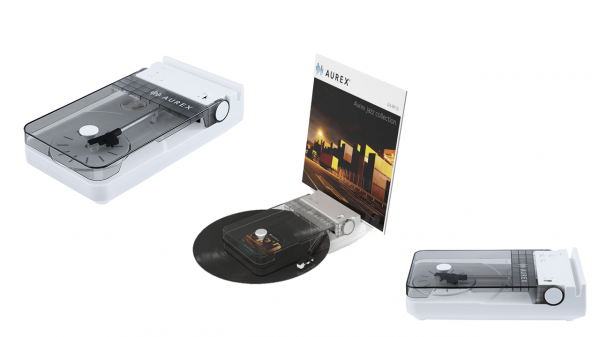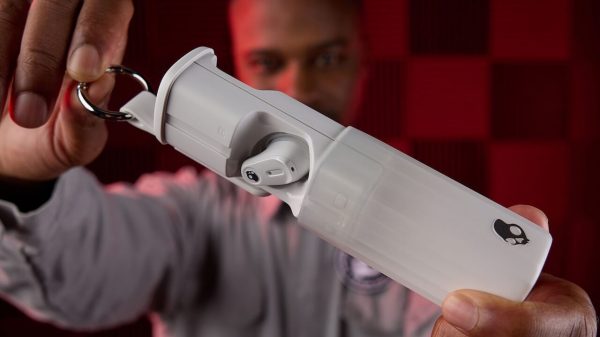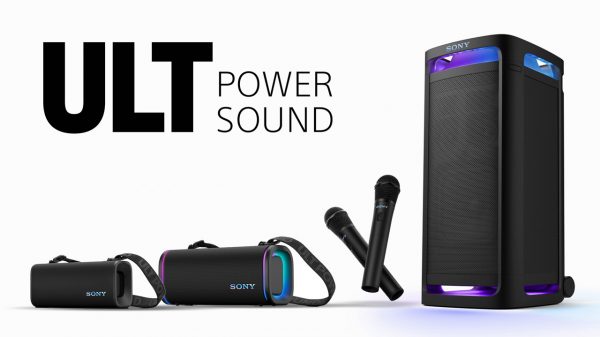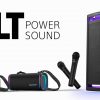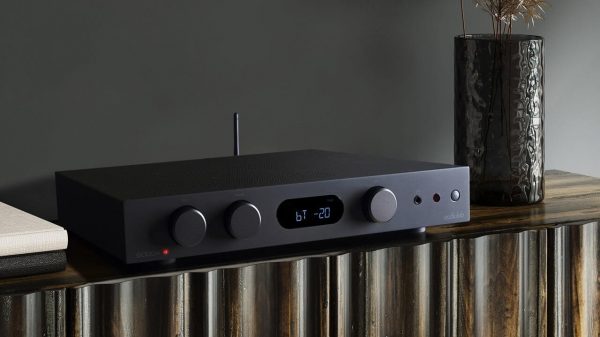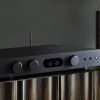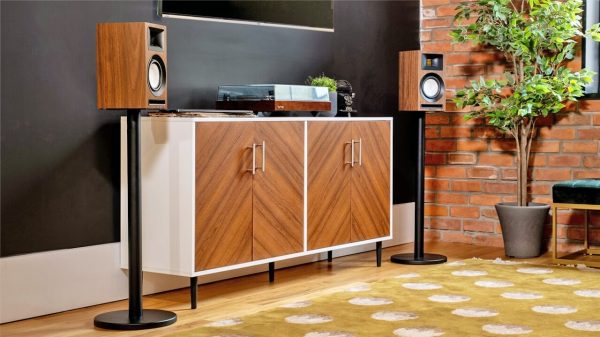30% Longer Battery
Bang & Olufsen today launched the 2020 upgrade of the portable Beolit Bluetooth speaker, its heritage dating back to 1939. The new Beolit 20, which replaces Beolit 17, retains the trademark big sound capabilities of previous generations. It keeps the same signature look — but with 30% longer battery life, integrated wireless Qi charging capability on its top shelf and a subtly updated design. Although wireless charging is convenient, don’t expect a fast charge from its 5-watt output.

Beolit 20, now in its 4th generation, retains the iconic silhouette of the Beolit series (Beolit 12, Beolit 15, Beolit 17), which was designed in collaboration with Cecilie Manz (2012). Each model number corresponds to the year it was released. Although appearing almost identical, there are subtle differences in Beolit 20. The original hole pattern has been reimagined with a modern design. Repeated angled lines and spiraling corners give a distinct and dynamic look. The height and curvature of the top shelf has been revised to give multiple placement options when charging smartphones. The buttons have been made more durable and a vegetable tanned leather strap makes it easy to care, while adding premium appeal. Interestingly, the company states acoustic performance has been optimized with, “45% air transparency for clear, refined sound.” Although, not quite sure what that means.

Big Sound, Small Package
Beolit 20 is small enough to carry easily and should deliver plenty of sound. The 5.5” long-stroke wideband woofer combined with 3 x 1.5” full ranges and 2 x 4” passive bass radiators deliver a hugely impressive 77dB bass capability and 93dB in mid-range loudness. This performance, combined with True360 omnidirectional sound, means that Beolit 20 is capable of comfortably filling most rooms with signature Bang & Olufsen sound. You can also stereo pair two Beolit 20s or pair the new speaker with the former Beolit 17 (check price at Amazon) to enhance the experience even further.
“As the product is used by our customers throughout the day, all around the home and outside, we focused on significantly improving the battery life which is now 30% longer at typical listening volumes. This has enabled us to add wireless Qi charging on the top of the product, so you can charge compatible devices like your mobile phone if you are short of battery at a party or the park.”
Christoffer Poulsen, Bang & Olufsen VP of Product Management

Specifications
- Speaker Configuration:
- 3 x 1.5” Full Range
- 1 x 5.5” Long-Stroke Wideband Woofer
- 2 x 4” Passive Bass Radiators
- Amplifier: 2 x 35W Class D for Woofer And Tweeter
- Frequency Range: 37 – 20.000 Hz
- Maximum Loudness @1m (SPL): 93dB SPL
- Bass Capability: 77dB SPL
- Wireless Codec: AAC, SBC
- Bluetooth Version: 4.2
- Battery Size: 3200 mAh
- Power consumption: Typical: 30W, Standby: 0.5W
- Power Supply: 15V DC / 3A Via USB-C Connector
- Charging time: 3 hours at 15V – 3A Charging
- Dimensions: 135 W x 230 H x 189 D mm
- Weight: 2700 g
Features
- Sound Direction: 360 Degrees
- Stereo Pairing: Available between Beolit 20 and Beolit 17
- Customizable Sound EQ: Five presets available and fully customisable on Bang & Olufsen app
- Materials: Anodised Aluminium, Vegetable Tanned Leather, Plastic
- Inputs and Outputs:
- USB-C For Charging
- 3.5mm Mini Headphone Jack
- On-Device Controls:
- Power Button
- Bluetooth Connect Button
- Play/Pause Button
- Volume up/down buttons
- Battery Playtime:
- Up to 37 hours at background listening volumes
- Up to 8 hours at typical listening volumes
- Battery Life Indicator: Battery LED, precise status viewable in the Bang & Olufsen app
- Charge Out: Yes (wireless up to 5W)
- Designer: Cecilie Manz

Price & Availability
Beolit 20 will be available for $500 in Grey Mist and Black Anthracite beginning October 29, 2020 at www.bang-olufsen.com, in Bang & Olufsen stores and select third party retailers such as Amazon.com. International pricing is listed at RRP 500 EUR / 450 GBP / 3750 DKK / 3988 CNY.
In the Box:
- Beolit 20
- USB-C to USB-C cable, 1.25m
- Plug adapter
- Quick start guide


